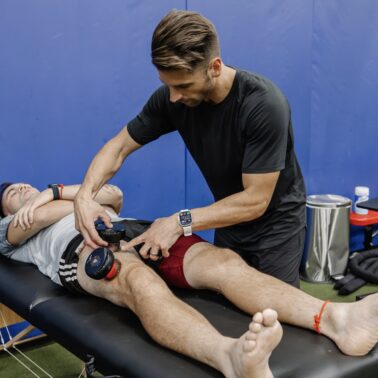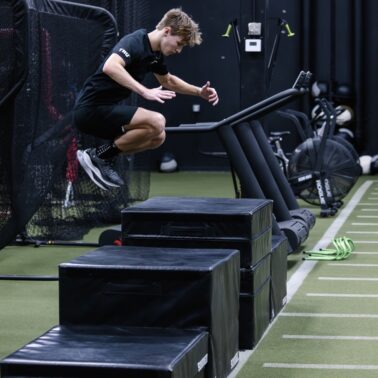“The shift from isolated testing to embedded assessments provides ongoing, real-time insights into your rehab & training progress.”
Adam Loiacono
What You will learn
- Embedded testing allows practitioners to make real-time adjustments based on objective data.
- Continuous monitoring provides deeper insights into athlete readiness, fatigue, and progression.
- Seamless data integration enables assessments without disrupting training or rehab.
- Objective measurements help identify injury risk factors before they become problems.
- Advances in technology are making embedded testing more accessible and effective.
In the modern era of sports performance and rehabilitation, data-driven decision-making has become essential. Traditional testing methods often require dedicated sessions, taking athletes out of their normal routines and potentially impacting performance and compliance.
However, embedded testing is a way we can monitor progress by seamlessly integrating assessments, technology, and biofeedback into daily training and rehab. This article explores the concept of embedded testing, its benefits, applications, challenges, and future implications in sports science and physical therapy.
What is Embedded Testing?
Embedded testing refers to the practice of integrating performance and rehabilitation assessments into everyday training and rehab sessions rather than isolating them as standalone tests. Unlike traditional periodic testing, which might occur once every few weeks or months, embedded testing continuously tracks key performance indicators (KPIs) over time without disrupting an athlete’s normal routine.
This approach allows for real-time monitoring of an athlete’s capabilities, providing practitioners with a more accurate and dynamic picture of progress. Technologies such as force plates, wearable sensors, and motion-tracking systems enable embedded testing to seamlessly capture meaningful data without the need for formal testing days.
Five Benefits of Embedded Testing
1. Real-Time Feedback for Decision Making
Embedded testing provides immediate insights into an athlete’s physical condition, allowing us to make informed, data-driven decisions on the spot. Whether assessing neuromuscular fatigue, asymmetries, or load tolerance, having access to real-time data enables quick adjustments to training loads, recovery strategies, and rehabilitation protocols.
For example, a strength coach can use force plate data collected during warm-ups to determine if an athlete is fatigued or primed for an intense session. Similarly, a physical therapist can monitor limb asymmetry in real-time during rehab exercises to fine-tune the intervention.
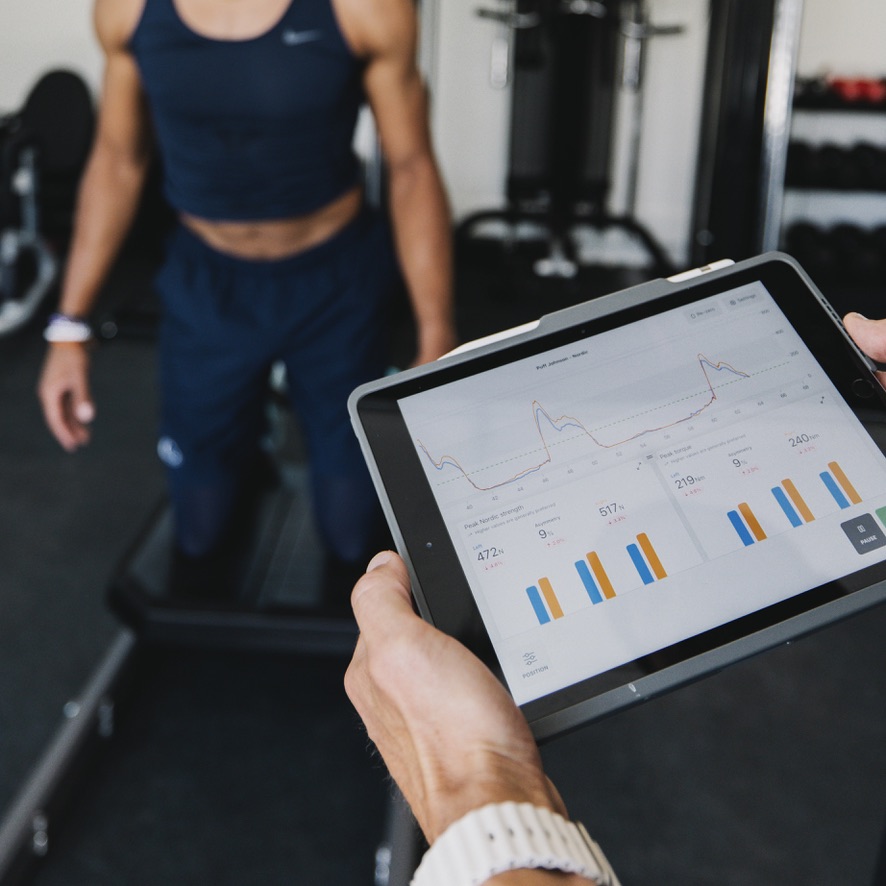
2. Seamless Integration into Training & Rehab
One of the biggest advantages of embedded testing is that it doesn’t require athletes to alter their schedule for formal assessments. Instead, data collection happens naturally within training sessions, making it easier to track longitudinal changes without disrupting the flow of work.
In a rehabilitation setting, this means athletes recovering from injuries can be tested multiple times per week without additional stress or scheduling burdens. Performance coaches can analyze movement quality and force production from common exercises, eliminating the need for separate testing days.
3. Tracking Progress Over Time
Instead of relying on sporadic data points from occasional testing sessions, embedded testing allows for consistent tracking of key metrics over time. This long-term monitoring approach provides deeper insights into an athlete’s response to training, injury recovery, and readiness to return to competition.
By having continuous data points, practitioners can identify trends, detect early warning signs of overtraining, and ensure that rehabilitation progresses as expected. This is especially crucial in return-to-play protocols, where objective data can help determine whether an athlete is truly ready to return or if more rehab is required.
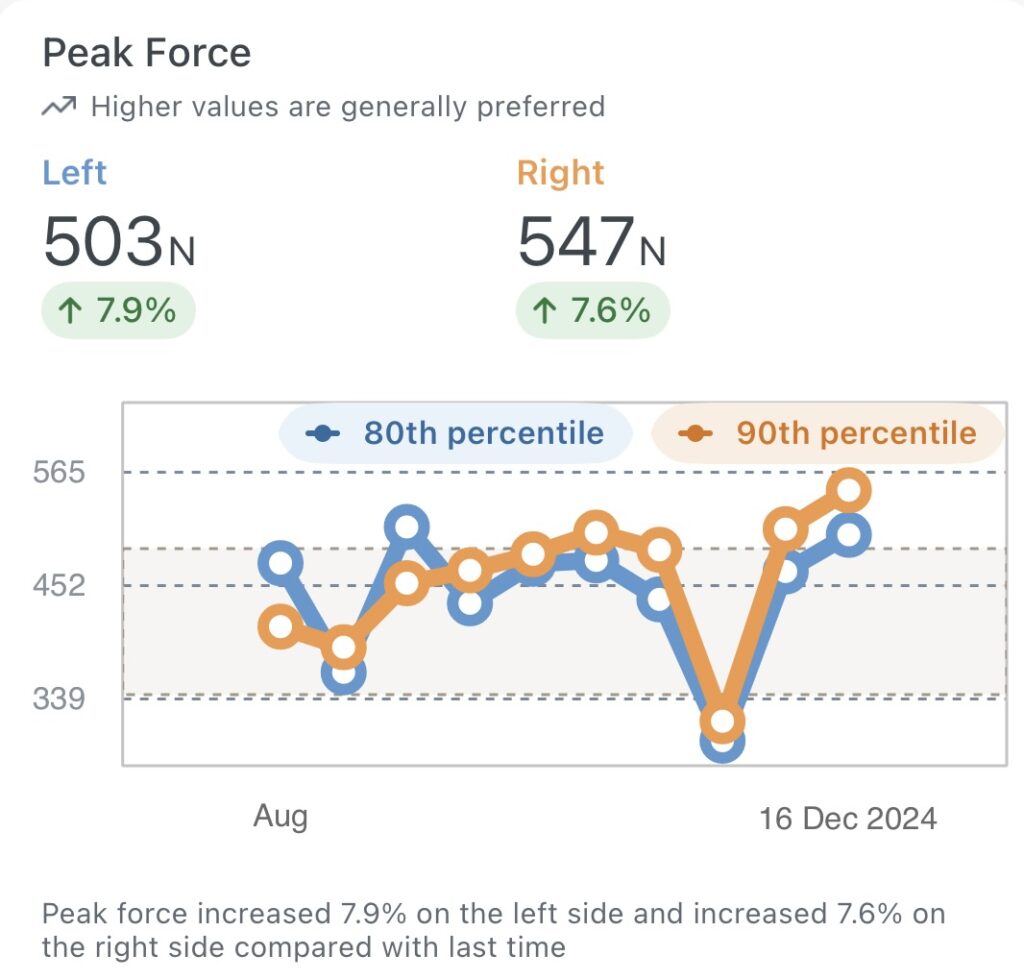
4. Improved Athlete Buy-In
Many athletes are resistant to formal testing because it can feel like an additional demand outside of their normal routine. Embedded testing, on the other hand, is less intrusive, making it easier to gain athlete compliance and buy-in. When athletes see that assessments are part of their everyday work, they are more likely to engage and trust the process.
Additionally, because embedded testing captures data in real-time, athletes can receive immediate feedback, which often reinforces positive training behaviors and allows for better self-awareness of their performance.
Practical Applications in Performance and Rehab
Rehabilitation: Monitoring Recovery and Readiness
Embedded testing is particularly useful in rehabilitation, where objective data is crucial in determining recovery progress. Technologies such as force plates and dynamometers can be integrated into daily rehab exercises to assess:
- Limb asymmetries
- Eccentric and concentric force production
- Load tolerance and movement quality
By embedding these tests within rehab sessions, therapists can make immediate modifications to exercises and ensure that the athlete is progressing safely.
Strength & Conditioning: Optimizing Load and Fatigue Management
In strength and conditioning, embedded testing provides valuable insights into athlete readiness and workload management. Examples include:
- Using force plates to measure jump height and reactive strength index (RSI) during warm-ups to gauge neuromuscular fatigue.
- Implementing velocity-based training (VBT) systems to assess bar speed and determine optimal training loads.
- Monitoring force asymmetries in compound movements like squats and deadlifts to detect imbalances before they lead to injuries.
This real-time data helps coaches tailor training sessions to match the athlete’s current state rather than relying on pre-planned programming that may not be appropriate on any given day.
Skill Development: Enhancing Movement Efficiency
Embedded testing is also being applied to skill acquisition and movement optimization. Motion-tracking technology and pressure sensors can provide real-time feedback on:
Foot strike patterns from companies like Plantiga or IMU Step can provide valuable feedback to enhance movement quality
By integrating these assessments into practice drills, coaches can make technical adjustments without interrupting the flow of training.
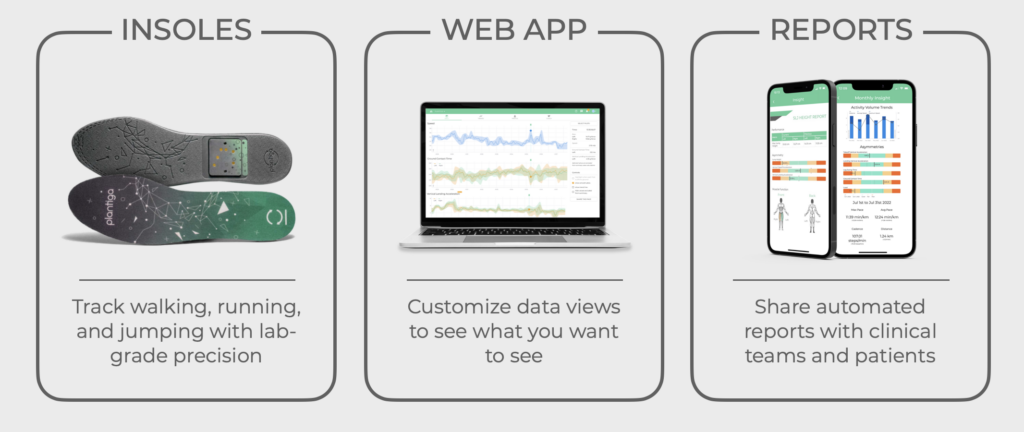
Challenges and Considerations
One of the biggest challenges with embedded testing is managing the large volume of data it produces, which can quickly overwhelm coaches and therapists without a clear strategy for filtering and interpretation. Effective data visualization tools and software solutions are essential for extracting meaningful insights, but raw data alone is not useful unless properly understood. Practitioners must be trained in interpreting key performance metrics and applying them to decision-making, requiring expertise in sports science, biomechanics, and performance analytics.
Additionally, while embedded testing is less intrusive than traditional assessments, athlete compliance is crucial, as consistent participation ensures accurate and reliable data collection. Educating athletes on the relevance of the data and how it benefits their performance is key to fostering long-term engagement and successful implementation.
The Future of Embedded Testing
As technology continues to evolve, embedded testing will become even more accessible and sophisticated. Future advancements may include:
- AI-Driven Insights: Machine learning algorithms that detect patterns in athlete data and provide automatic recommendations.
- Wearable Technology Expansion: More advanced sensors that integrate with training gear to track biomechanical and physiological metrics seamlessly.
- Personalized Adaptive Training Programs: Automated adjustments to training loads and rehab protocols based on real-time data collection.
Additionally, as embedded testing becomes more widely accepted, its use will likely expand beyond elite sports into general fitness, youth development, and even workplace ergonomics.
Conclusion
Embedded testing represents a paradigm shift in how sports professionals and rehab specialists approach athlete monitoring. By seamlessly integrating assessments into everyday training and rehabilitation, practitioners gain real-time insights, enhance decision-making, and improve athlete outcomes.
Adopting embedded testing means embracing a data-driven approach that optimizes training loads, enhances injury prevention, and accelerates return-to-play protocols. As technology continues to advance, embedded testing will become an indispensable tool in achieving peak human performance.
Learn More About Testing & Sports Science
Check out this episode with U.S. Soccer’s Director of Sports Science, Jordan Webb, as he breaks down practical strategies to manage and monitor performance.
Want to Learn More?
Subscribe today to Adam’s YouTube channel to get the latest on rehab, training, sports science, and so much more!




